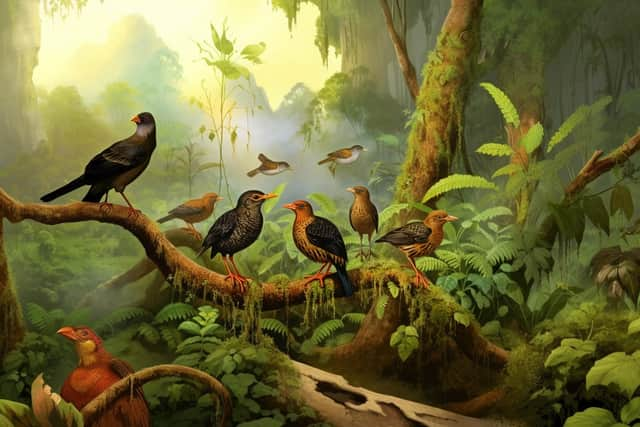Birds: New study suggests humans have wiped out twice as many bird species as previously believed
and live on Freeview channel 276
A new study has found humans may have wiped out as many as 1,400 bird species, including many we may never know anything about.
The research by the UK Centre for Ecology and Hydrology (UKCEH), published in peer-reviewed science journal Nature Communications on Tuesday (19 December), suggests that one in nine bird species have been wiped out over the course of human history - double the previous estimate - due to the far-reaching impacts of deforestation, overhunting, and the introduction of invasive species. Many of these were likely unknown bird species, the scientists say, with lightweight bird bone fossils more likely to break down over time - concealing the true extent of global extinctions.
Advertisement
Hide AdAdvertisement
Hide AdResearchers now believe 1,430 bird species – almost 12% – have died out over modern human history, since the Late Pleistocene around 130,000 years ago. It is thought the vast majority of them went extinct directly or indirectly due to human activity.
“Our study demonstrates there has been a far higher human impact on avian diversity than previously recognised." lead author Dr Rob Cooke, an ecological modeller at UKCEH, told PA. “Humans have rapidly devastated bird populations via habitat loss, overexploitation and the introduction of rats, pigs and dogs that raided nests of birds and competed with them for food.


“We show that many species became extinct before written records and left no trace, lost from history.” His co-author, Dr Spren Faurby of the University of Gothenburg, added that these historic extinctions have major implications for our current biodiversity crisis.
“The world may not only have lost many fascinating birds but also their varied ecological roles, which are likely to have included key functions such as seed dispersal and pollination. This will have had cascading harmful effects on ecosystems so, in addition to bird extinctions, we will have lost a lot of plants and animals that depended on these species for survival.”
Advertisement
Hide AdAdvertisement
Hide AdPrevious data suggests some 640 bird species had been driven extinct since the Late Pleistocene period – 90% of these on islands inhabited by people. These range from the iconic dodo of Mauritius to the great auk of the North Atlantic, to lesser-known species like the Saint Helena giant hoopoe.
However, the researchers estimated the actual figure is more than double that – 1,430 lost species – leaving just under 11,000 today. According to Dr Cooke, it is likely that only around 50 of these species would have died out naturally. The scientists say their study has revealed what may have been the largest human-driven vertebrate extinction event in history, during the 14th century, when an estimated 570 bird species were lost after people first arrived in the Eastern Pacific - including Hawaii and the Cook Islands.
The findings are based on modelled estimates on known extinction events calculated against how comprehensive the relevant research is in other regions, when compared to New Zealand - which is the only country in the world where pre-human bird fauna is believed to be completely known. The fewer studies in a region, the more incomplete the fossil record is expected to be, and the greater the number of undiscovered extinctions scientists estimate may have taken place.
In the United Kingdom alone, a recent environmental stocktake has suggested one in six species are at immediate risk of extinction. These include 43% of British bird species, as well as 1% of our amphibians and reptiles, and one-in-four land mammals. Britain's flora and foliage have not escaped unscathed either, with 28% of fungi and lichen now meeting conservation red-list criteria, and the distribution of more than half of our flowering plant species declining - meaning less people get to enjoy fields filled with species like harebells and heather.
Comment Guidelines
National World encourages reader discussion on our stories. User feedback, insights and back-and-forth exchanges add a rich layer of context to reporting. Please review our Community Guidelines before commenting.
